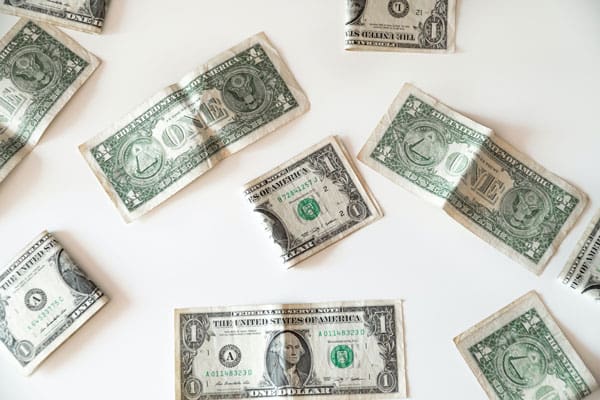
That's especially important now because of the recent Wayfair Supreme Court decision that allows states to force businesses to collect tax if their sales exceed 200 transactions in a state or $100,00 in sales.
What Wayfair basically means is a bunch more businesses are now collecting sales taxes than ever before in the history of the U.S. You could (and we have, and we still do) argue that this is not a positive development, but that’s beside the point for this piece.
But think of it from a different angle. More businesses than ever are being overcharged on sales tax. How can that be, you ask?
Sales and use tax is notoriously difficult to get correct. First, there are more than 9,000 taxing jurisdictions, all with their own tax rates. So just getting the correct tax rate applied to a taxable transaction is no small feat. And it’s one that businesses get wrong surprisingly often.
Also, with so many jurisdictions and differing laws and policies, there is a huge variability in what is taxable from state-to-state. Even if the vendors get the rate right, they might apply tax to something that isn’t taxable in the first place.
That is a great question. The answer is complicated, of course, but one major reason is precisely because of all of the automation that is now available. Seem counterintuitive? Read on ...
One reason is that tax rates are often based on zip codes. As Avalara points out on its website1:
The problem with ZIP codes is that they have nothing to do with sales tax. ZIP codes are used by the U.S. Postal Service to map the most efficient routes for mail carriers to follow. Efficient mail routes, however, don’t care about political boundaries. That means ZIP codes will often straddle multiple cities, counties, and in some cases even states. Close to urban centers, ZIP codes are likely to nest comfortably inside a single city’s boundaries. But around the edges, things get very messy.
Within one zip code (36301) in Alabama, there are nine unique tax areas, and five unique rates ranging from 5% to 9%. Without a complete address, it is impossible to know which rate to apply. That’s just one example, there are many, many others, but this one gives you the idea.
Now that you know that there are possibly many tax rates for a given ZIP code, you begin to see why vendors sometimes get the rate wrong. It’s because the vendor had to make some decisions when they set up their rate calculation software. (Well, it could also be that the rate software just got the rate wrong.) When the vendor set up the rate software, they had to make a call, that if there were multiple sales tax rates in a given ZIP code, to automatically charge the highest rate.
The sales tax rate automatically chosen as a result, could be correct or it could be way too much. It depends on exactly where the shipment was made in that zip code. In any case, the vendor feels like they covered their own risk.
In the meantime, unless you (a seller) are really paying close attention to every invoice you get, you could easily overpay sales taxes just based on the wrong rates being charged. But there’s even more reason why businesses overpay sales tax.

The other main reason businesses overpay sales tax is because vendors charge tax on items that simply aren’t taxable. This can be exacerbated by automation. It’s not necessarily the software’s fault. It’s usually more the fault (or limitations) of the vendor’s accounting system.
Sales tax software from the larger vendors is actually very sophisticated.When it comes to product taxability codes, they might have thousands of unique codes for which they created taxability rules for all of the taxing jurisdictions. The software tracks these codes and applies changes when the states change their rules. This is really a miracle and a huge advance from what was possible even a few years ago. So the problem is not usually with the sales tax software.
The problem comes in the form of what the vendor can track themselves. Vendors can have thousands of SKUs and it can be difficult to match them up with the proper product code in the sales tax software. Or, even more problematic, certain vendors might have just a few types of products/services they sell and can account for in their software.
In both situations, when these vendors set up their sales tax software they also usually have to make some sort of call on how to apply tax in the gray areas. You see, the tax software has all these product taxability codes but the accounting software can only take one product taxability code per item they sell. The taxability codes are usually much more granular than the vendor product codes because the sales tax rules depend on such crazy little rules.
Take a donut shop. They sell donuts. Sometimes they sell one at a time, sometimes three dozen to a single customer. The donut shop’s product listing in the POS software has one item for donut. Maybe there are two: one for glazed, and one for cake, or more, but you get the idea). When they ring up the sale they sold donuts. That makes total sense. So what’s the problem? Well, when they set up the sales tax software, they see that there are three different product taxability codes for donuts. One is for donuts. One is for “six or more donuts” and one is for “12 or more donuts”. Yikes, which one to choose?
Well, that depends what the vendor wants to accomplish. If they want to be perfectly accurate across all the states, they have to rewrite their POS system and then hope the sales clerk rings it up right. Or they have to choose one of the product taxability codes. They realize if they just choose the “donut” code, they’ll end up charging tax in more states than if they chose either of the other codes. That’s because some states impose sales tax only if a buyer purchases less than 6 donuts at a time. But the vendor decides they’d rather err on the side of caution rather than take the risk of missing the chance to tax at item at the time of the sale.
That’s a simple example; it can be much more complicated if a vendor sells services along with products and sometimes bundles them together, but this example illustrates the basic point.
The fact is, this type of decision making happens all of the time when sales tax software is implemented. When faced with this situation, it’s obvious what most vendors will choose most of the time: (a) use the highest rate applicable, and (b) apply the most conservative tax rule.
So with automation, it should be easy to see why vendors are charging more tax incorrectly than ever before. And with Wayfair in place, more vendors are collecting taxes in more places than ever before.
We care about your data — privacy policy.